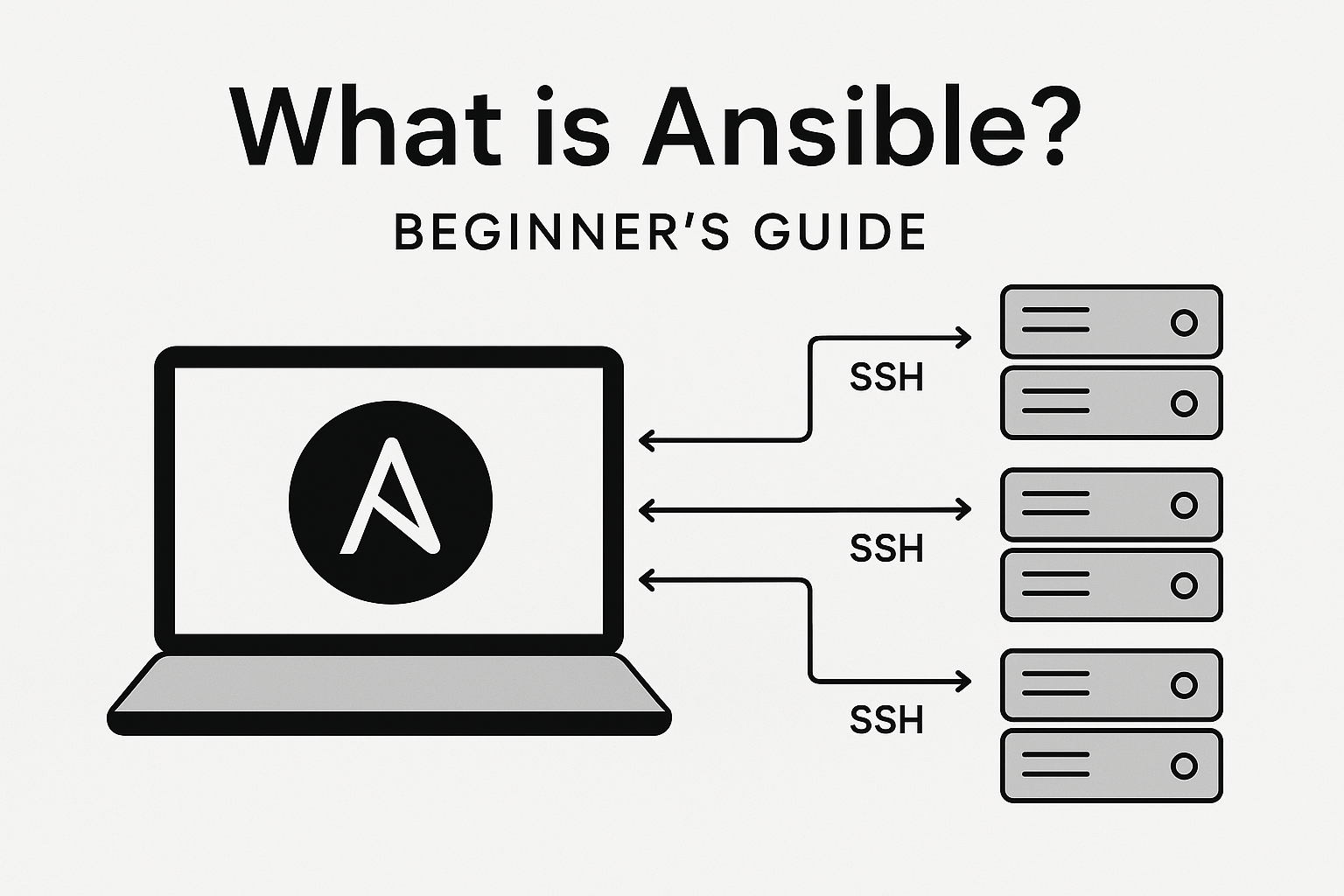What is Ansible
This Ansible Beginner’s Guide – What is Ansible & Step-by-Step IT Automation will help you understand why automation matters and how Ansible makes IT tasks simple, powerful, and scalable.
In today’s fast-paced IT world, automation is no longer a luxury—it’s a necessity. Among the many automation tools available, Ansible stands out as one of the most simple, powerful, and easy-to-learn tools. Whether you’re a student, system administrator, or DevOps engineer, Ansible helps you automate repetitive tasks, manage configurations, and scale applications effortlessly.
1. Introduction: Why Automation Matters
Imagine you have 4 servers (A, B, C, D). You want to install Nginx, update packages, and configure firewall rules. Normally, you would:
- Login to each server manually via SSH
- Run installation commands one by one
- Repeat the same steps again and again
👉 This is time-consuming, repetitive, and error-prone.
That’s where Ansible comes in.


2. What is Ansible?
Ansible is an open-source IT automation tool developed by Red Hat. It helps system admins, developers, and DevOps engineers to:
- Automate configuration management
- Deploy applications
- Perform software updates
- Manage networks and cloud infrastructure
Think of Ansible as your automation assistant — instead of doing tasks on servers one by one, you write instructions once, and Ansible applies them to all servers at once.
As you’ll see in this Ansible Beginner’s Guide – What is Ansible & Step-by-Step IT Automation, the tool uses inventory, playbooks, and modules to automate tasks.
3. How Ansible Works
Ansible uses 3 main components:
- Inventory → List of servers (e.g., A, B, C, D)
- Playbook → Instructions written in YAML (what tasks to perform)
- Modules → Pre-built tools (like installing packages, managing users, copying files)
👉 Example: Write a playbook to install Nginx → Run it once → Nginx gets installed on all servers automatically.
4. Advantages of Ansible
- Simple and Easy to Use
- Ansible uses YAML to define tasks in playbooks.
- Even those with little or no programming experience can start quickly.
- Agentless Architecture
- No need to install additional agents on remote systems.
- You only need SSH access and Python installed.
- Powerful Configuration Management
- Automates provisioning, application deployment, patching, and infrastructure management.
- Idempotency
- Ansible playbooks can run multiple times without changing the system state unnecessarily.
- Scalability
- Can manage hundreds or thousands of servers simultaneously.
- Open Source & Free
- Backed by a strong community of contributors.
- Regular updates and a large ecosystem of modules.
- Integration with Other Tools
- Works smoothly with Docker, Kubernetes, AWS, Azure, and more.
5. YAML in Ansible (Example)
Ansible playbooks use YAML format. Example:
- name: Install Nginx on all servers
hosts: all
tasks:
- name: Install Nginx
apt:
name: nginx
state: present
👉 This installs Nginx on every server listed in your inventory file.
6. Ansible in Real Life
- Automating web server setup
- Deploying applications across environments (dev → staging → prod)
- Updating OS packages on 100+ servers in one command
- Managing cloud infrastructure (AWS, Azure, GCP)
7. Conclusion
Ansible makes IT automation simple, reliable, and scalable. Whether you’re managing a few servers or thousands, Ansible helps you save time, reduce errors, and focus on innovation.
This Ansible Beginner’s Guide – What is Ansible & Step-by-Step IT Automation proves that whether you manage 5 or 500 servers, Ansible saves time and reduces errors.
If you’re just starting your automation journey, Ansible is the perfect first step.
8. FAQs
Q1. Is Ansible free to use?
Yes, Ansible is open-source and completely free.
Q2. Do I need coding skills to learn Ansible?
No. Ansible uses YAML, which is very easy to read and write.
Q3. What platforms does Ansible support?
It works on Linux, Unix, Windows (via SSH/WinRM), and major cloud providers (AWS, Azure, GCP).
Q4. How is Ansible different from Puppet or Chef?
Unlike Puppet or Chef, Ansible is agentless and much simpler to set up.
- Logic Building Assignments – 2025 - October 15, 2025
- Create Your First Ansible Playbook: Step-by-Step Guide - September 29, 2025
- Ansible Beginner’s Guide – What is Ansible & Step-by-Step IT Automation - September 9, 2025

